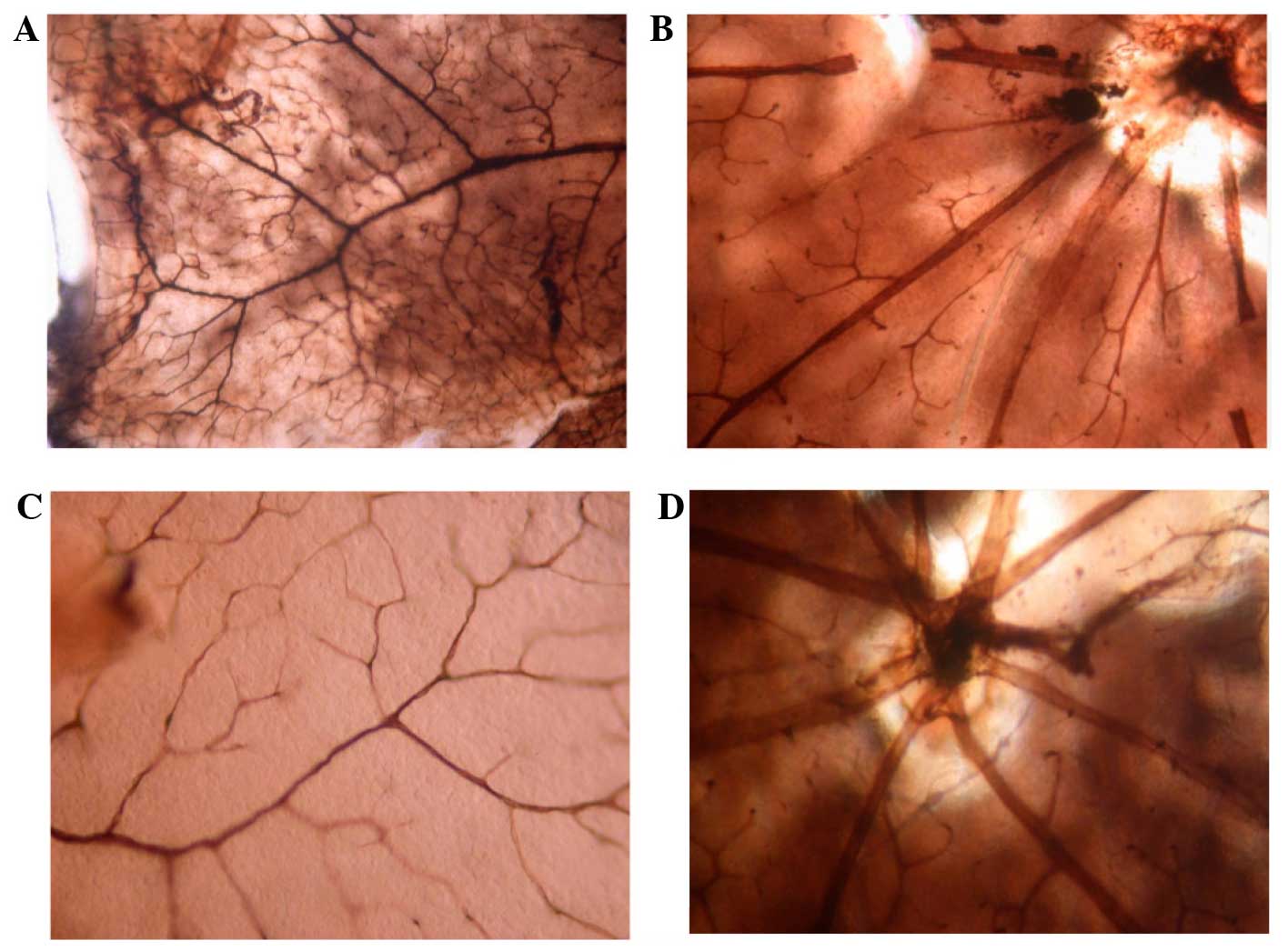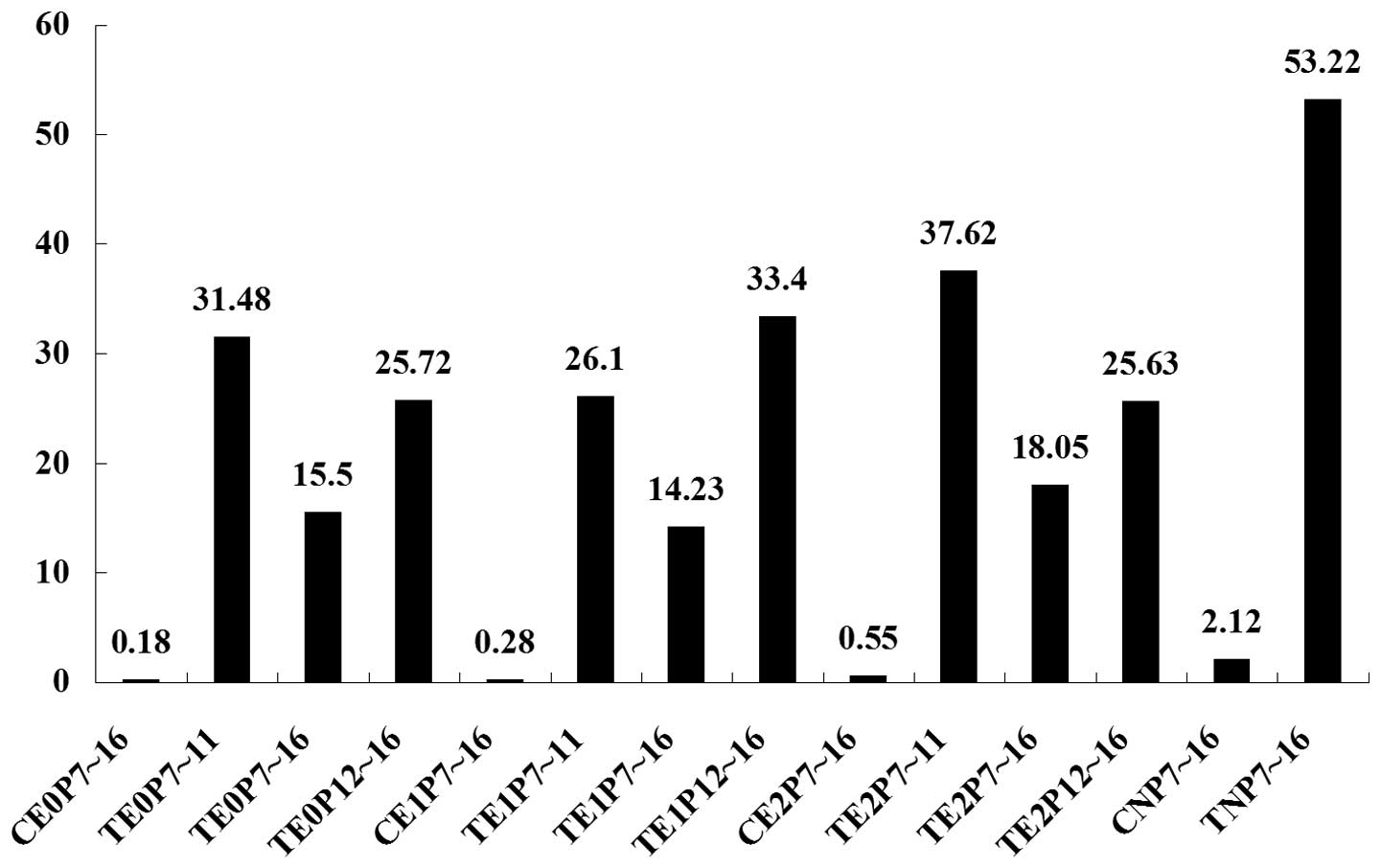|
1
|
Chen J and Smith LE: Retinopathy of
prematurity. Angiogenesis. 10:133–140. 2007. View Article : Google Scholar : PubMed/NCBI
|
|
2
|
Li Z and Ni WJ: Advances of biological
drugs for retinal neovascularization. Guo Ki Yan Ke Za Zhi.
7:1119–1123. 2007.(In Chinese).
|
|
3
|
No authors listed. An international
classification of retinopathy of prematurity. Pediatrics.
74:127–133. 1984.PubMed/NCBI
|
|
4
|
No authors listed. An international
classification of retinopathy of prematurity. II. The
classification of retinal detachment. The International Committee
for the Classification of the Late Stages of Retinopathy of
Prematurity. Arch Ophthalmol. 105:906–912. 1987. View Article : Google Scholar : PubMed/NCBI
|
|
5
|
Cryotherapy for Retinopathy of Prematurity
Cooperative Group, . Multicenter trial of cryotherapy for
retinopathy of prematurity. Preliminary results. Arch Ophthalmol.
106:471–479. 1988. View Article : Google Scholar : PubMed/NCBI
|
|
6
|
Cryotherapy for Retinopathy of Prematurity
Cooperative Group, . Multicenter trial of cryotherapy for
retinopathy of prematurity. Three-month outcome. Arch Ophthalmol.
108:195–204. 1990. View Article : Google Scholar : PubMed/NCBI
|
|
7
|
Cryotherapy for Retinopathy of Prematurity
Cooperative Group, . Multicenter trial of cryotherapy for
retinopathy of prematurity. One-year outcome - structure and
function. Arch Ophthalmol. 108:1408–1416. 1990. View Article : Google Scholar : PubMed/NCBI
|
|
8
|
Cryotherapy for Retinopathy of Prematurity
Cooperative Group, . Multicenter trial of cryotherapy for
retinopathy of prematurity. 3 1/2-year outcome - structure and
function. Arch Ophthalmol. 111:339–344. 1993. View Article : Google Scholar : PubMed/NCBI
|
|
9
|
Cryotherapy for Retinopathy of Prematurity
Cooperative Group, . Multicenter trial of cryotherapy for
retinopathy of prematurity. Snellen visual acuity and structural
outcome at 5 1/2 years after randomization. Arch Ophthalmol.
114:417–424. 1996. View Article : Google Scholar : PubMed/NCBI
|
|
10
|
Greven CM and Tasman W: Rhegmatogenous
retinal detachment following cryotherapy in retinopathy of
prematurity. Arch Ophthalmol. 107:1017–1018. 1989. View Article : Google Scholar : PubMed/NCBI
|
|
11
|
Ben-Sira I, Nissenkorn I, Weinberger D,
Shohat M, Kremer I, Krikler R and Reisner SH: Long-term results of
cryotherapy for active stages of retinopathy of prematurity.
Ophthalmology. 93:1423–1428. 1986. View Article : Google Scholar : PubMed/NCBI
|
|
12
|
Quinn GE, Miller DL, Evans JA, Tasman WE,
McNamara JA and Schaffer DB: Measurement of Goldmann visual fields
in older children who received cryotherapy as infants for threshold
retinopathy of prematurity. Arch Ophthalmol. 114:425–428. 1996.
View Article : Google Scholar : PubMed/NCBI
|
|
13
|
Biglan AW, et al: Progress in ROP
research. Chin J Med. 1:7–13. 1990.
|
|
14
|
Ma DH, Chen JK, Zhang F, Lin KY, Yao JY
and Yu JS: Regulation of corneal angiogenesis in limbal stem cell
deficiency. Prog Retin Eye Res. 25:563–590. 2006. View Article : Google Scholar : PubMed/NCBI
|
|
15
|
Mintz-Hittner HA, Kennedy KA and Chuang
AZBEAT-ROP Cooperative Group: Efficacy of intravitreal bevacizumab
for stage 3+ retinopathy of prematurity. N Engl J Med. 364:603–615.
2011. View Article : Google Scholar : PubMed/NCBI
|
|
16
|
Miki K, Miki A, Matsuoka M, Muramatsu D,
Hackett SF and Campochiaro PA: Effects of intraocular ranibizumab
and bevacizumab in transgenic mice expressing human vascular
endothelial growth factor. Ophthalmology. 116:1748–1754. 2009.
View Article : Google Scholar : PubMed/NCBI
|
|
17
|
Yatoh S, Kawakami Y, Imai M, Kozawa T,
Segawa T, Suzuki H, Yamashita K and Okuda Y: Effect of a topically
applied neutralizing antibody against vascular endothelial growth
factor on corneal allograft rejection of rat. Transplantation.
66:1519–1524. 1998. View Article : Google Scholar : PubMed/NCBI
|
|
18
|
Moshfeghi DM and Berrocal AM: Retinopathy
of prematurity in the time of bevacizumab: Incorporating the
BEAT-ROP results into clinical practice. Ophthalmology.
118:1227–1228. 2011.PubMed/NCBI
|
|
19
|
O'Reilly MS, Boehm T, Shing Y, Fukai N,
Vasios G, Lane WS, Flynn E, Birkhead JR, Olsen BR and Folkman J:
Endostatin: An endogenous inhibitor of angiogenesis and tumor
growth. Cell. 88:277–285. 1997. View Article : Google Scholar : PubMed/NCBI
|
|
20
|
Suzuma K, Takagi H, Otani A, Oh H and
Honda Y: Expression of thrombospondin-1 in ischemia-induced retinal
neovascularization. Am J Pathol. 154:343–354. 1999. View Article : Google Scholar : PubMed/NCBI
|
|
21
|
Coughlin SR: Thrombin signaling and
protease-activated receptors. Nature. 407:258–264. 2000. View Article : Google Scholar : PubMed/NCBI
|
|
22
|
Shafiee A, Penn JS, Krutzsch HC, Inman JK,
Roberts DD and Blake DA: Inhibition of retinal angiogenesis by
peptides derived from thrombospondin-1. Invest Ophthalmol Vis Sci.
41:2378–2388. 2000.PubMed/NCBI
|
|
23
|
Lonchampt M, Pennel L and Duhault J:
Hyperoxia/normoxia-driven retinal angiogenesis in mice: A role for
angiotensin II. Invest Ophthalmol Vis Sci. 42:429–432.
2001.PubMed/NCBI
|
|
24
|
Falavarjani KG and Nguyen QD: Adverse
events and complications associated with intravitreal injection of
anti-VEGF agents: A review of literature. Eye(Lond). 27:787–794.
2013.PubMed/NCBI
|
|
25
|
Hoerster R, Muether P, Dahlke C, Mehler K,
Oberthür A, Kirchof B and Fauser S: Serum concentrations of
vascular endothelial growth factor in an infant treated with
ranibizumab for retinopathy of prematurity. Acta Ophthalmol.
91:e74–e75. 2013. View Article : Google Scholar : PubMed/NCBI
|
|
26
|
Simoncini T, Maffei S, Basta G, Barsacchi
G, Genazzani AR, Liao JK and De Caterina R: Estrogens and
glucocorticoids inhibit endothelial vascular cell adhesion
molecule-1 expression by different transcriptional mechanisms. Circ
Res. 87:19–25. 2000. View Article : Google Scholar : PubMed/NCBI
|
|
27
|
Ma X, Bi H, Qu Y, Xie X and Li J: The
contrasting effect of estrogen on mRNA expression of VEGF in bovine
retinal vascular endothelial cells under different oxygen
conditions. Graefes Arch Clin Exp Ophthalmol. 249:871–877. 2011.
View Article : Google Scholar : PubMed/NCBI
|
|
28
|
Thompson LP, Pinkas G and Weiner CP:
Chronic 17beta-estradiol replacement increases nitric
oxide-mediated vasodilation of guinea pig coronary
microcirculation. Circulation. 102:445–451. 2000. View Article : Google Scholar : PubMed/NCBI
|
|
29
|
Suzuma I, Mandai M, Takagi H, Suzuma K,
Otani A, Oh H, Kobayashi K and Honda Y: 17 Beta-estradiol increases
VEGF receptor-2 and promotes DNA synthesis in retinal microvascular
endothelial cells. Invest Ophthalmol Vis Sci. 40:2122–2129.
1999.PubMed/NCBI
|
|
30
|
Miyamoto N, Mandai M, Takagi H, Suzuma I,
Suzuma K, Koyama S, Otani A, Oh H and Honda Y: Contrasting effect
of estrogen on VEGF induction under different oxygen status and its
role in murine ROP. Invest Ophthalmol Vis Sci. 43:2007–2014.
2002.PubMed/NCBI
|
|
31
|
Takeyama J, Suzuke T, Inoue S, Kaneko C,
Nagura H, Harada N and Sasano H: Expression and cellular
localization of estrogen receptors and in the human fetus. J Clin
Endocrinol Metab. 86:2258–2262. 2001. View Article : Google Scholar : PubMed/NCBI
|
|
32
|
Gruber CJ, Tschugguel W, Schneeberger C
and Huber JC: Production and actions of estrogens. N Engl J Med.
346:340–352. 2002. View Article : Google Scholar : PubMed/NCBI
|
|
33
|
Huppmann S, Römer S, Altmann R, Obladen M
and Berns M: 17beta-estradiol attenuates hyperoxia-induced
apoptosis in mouse C8-D1A cell line. J Neuro Res. 86:3420–3426.
2008. View Article : Google Scholar
|
|
34
|
Morles DE, McGowan KA, Grant DS,
Maheshwari S, Bhartiya D, Cid MC, Kleinman HK and Schnaper HW:
Molecular and cellular cardiology: Estrogen promotes angiogenic
activity in human umbilical vein endothelial cells in vitro and in
a murine model. Circulation. 91:755–763. 1995. View Article : Google Scholar : PubMed/NCBI
|
|
35
|
Shi WJ, Chen C, Zhou GM, Hu BY and Xiao
HL: The role of vascular endothelial growth factor, fibroblast
growth factor-2 and estrogen receptor in the pathogenesis of
retinopathy of neonatal mice. Fudan Xue Bao Yi Xue Ban Bian Ji Wei
Yuan Hui. 34:228–232. 2007.(In Chinese).
|
|
36
|
Trotter A, Maier L, Grill HJ, Kohn T,
Heckmann M and Pohlandt F: Effects of postnatal estradiol and
progesterone replacement in extremely preterm infants. J Clin
Endocrinol Metab. 84:4531–4535. 1999. View Article : Google Scholar : PubMed/NCBI
|
|
37
|
Trotter A, Bokelmann B, Sorgo W,
Bechinger-Kornhuber D, Heinemann H, Schmücker G, Oesterle M,
Köhntop B, Brisch KH and Pohlandt F: Follow-up examination at the
age of 15 months of extremely preterm infants after postnatal
estradiol and progesterone replacement. J Clin Endocrinol Metab.
86:601–603. 2001. View Article : Google Scholar : PubMed/NCBI
|
|
38
|
Trotter A, Maier L, Kohn T, Böhm W and
Pohlandt F: Growth of the uterus and mammary glands and vaginal
cytologic features in extremely premature infants with postnatal
replacement of estradiol and progesterone. Am J Obstet Gynecol.
186:184–188. 2002. View Article : Google Scholar : PubMed/NCBI
|
|
39
|
McLaren J, Prentice A, Charnock-Jones DS,
Millican SA, Müller KH, Sharkey AM and Smith SK: Vascular
endothelial growth factor is produced by peritoneal fluid
macrophages in endometriosis and is regulated by ovarian steroids.
J Clin Invest. 98:482–489. 1996. View Article : Google Scholar : PubMed/NCBI
|
|
40
|
Kaja S, Yang SH, Wei J, Fujitani K, Liu R,
Brun-Zinkernagel AM, Simpkins JW, Inokuchi K and Koulen P: Estrogen
protects the inner retina from apoptosis and ischemia-induced loss
of Vesl-1 L/Homer 1c immunoreactive synaptic connections. Invest
Ophthalmol Vis Sci. 44:3155–3162. 2003. View Article : Google Scholar : PubMed/NCBI
|
|
41
|
Xu J and Su H: Body surface area
calculation method for humans and animalsPharmacological
Experiments. Yuanpei Zhang: Beijing Publication Group; Beijing: pp.
2411996
|
|
42
|
Yuen KK and Kahn HA: The association of
femal hormones with blindness from diabetic retinopathy. Am J
Ophthalmol. 81:820–822. 1976. View Article : Google Scholar : PubMed/NCBI
|
|
43
|
Porter JC: Hormonal regulation of breast
development and activity. J Invest Dermatol. 63:85–92. 1974.
View Article : Google Scholar : PubMed/NCBI
|











